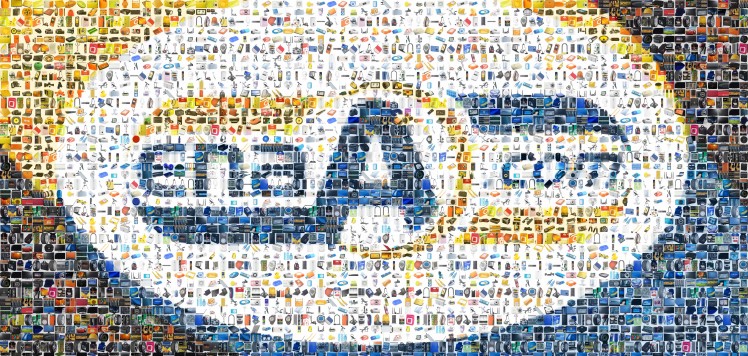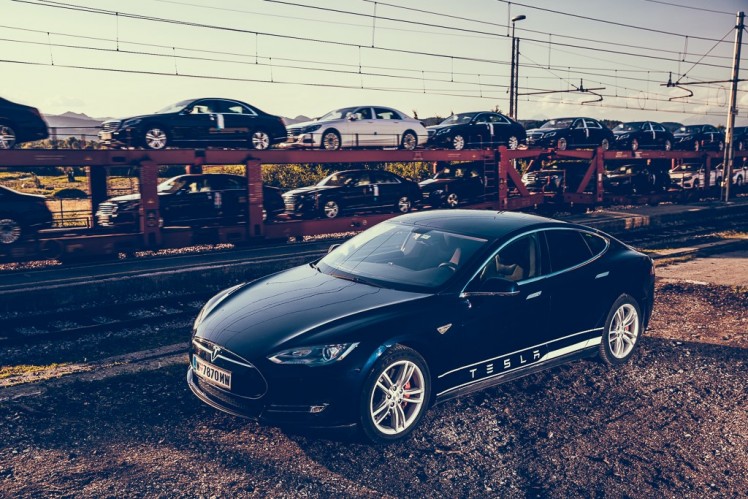Online shoppers notice every detail. Detail?
How did Amazon screw up? Or how fast can you lose a customer? Article How Amazon Messed Up is the best summary ever, just to illustrate that everything you do should be for the customer. I couldn’t say it better and I’ve been selling online for 18 years. This is why you should sell on enaA.com, Slovenia’s largest marketplace. Because we take all this into account. Our partners just have to prepare the best offers. The enaA team takes care of the rest. I’m really proud of them!
Why there is no European Amazon, Google, Uber & Airbnb
When I started my online sales business with the enaA.com website in 1999, there was practically no legislation regulating this field. A grey area. Should I have waited for laws to be adopted in order to know how to work legally?
Seventeen years later and we are still far from having relevant laws in Slovenia which would support the development of online trading. All this in the country which has in the meantime succeeded in legalising same-sex marriages, the 21st country in the world to do so. I am proud of it. Really proud! I have also lived to see cannabis no longer being classified in the illicit drug class that attracts the most severe penalty and is now allowed to be grown and used for medicinal purposes. Slovenia is not exactly among the leading countries here but at least things have moved forward. We put the right to clean drinking water into the constitution.
And although European politicians refer to the development of the digital market as one of the most important generators of European economic growth, we online traders have so far received from them only legislation on web cookies, which has neither increased the volume of online sales in Europe nor improved user experience. Thus one cannot count on European companies to develop and compete with the American Amazon or the Chinese Alibaba. Sales of both companies to customers in EU countries have been growing steeply from year to year. Why? Because the countries of their origin have highly effective solutions regarding copyrights, customer protection, payment transactions and delivery, which allow for exceptionally low cost of selling throughout the world. Let us not forget that we are dealing here with a global retail sale with an average purchase price of about 20 euros in which every cent counts! Billions of contracts with the average value of peanuts. In Slovenia, the profit would already have evaporated during the administrative procedures related to re-export, VAT accounting, arrangement of copyrights and the costs associated with packaging waste and the destruction of electricity devices.
There may actually be only a handful of Slovenian photographers who sell their work on istock.com, yet every day there are more and more businessmen who know how to buy products in China and send them directly to Amazon warehouses in the USA to be re-sold from there. If we add to these Alibaba, eBay, Etsy and other similar online wholesale markets, this is not such a small business any more. But these marketplaces are not located in Europe and so the money goes other way.
Do we have legislation to regulate this? No. Are people who are doing this breaking laws? Not intentionally, for sure. Uber and AirBnB also want to operate their businesses legally. The fact that they are coming on to the market with a new business model should not be an obstacle. Both offer a very transparent operation, much more than, for example, issuing invoices in regular taxis or in renting rooms and suites via tourist associations on the Adriatic coast. Everything is electronic, everything is recorded. It is quite clear what the VAT value is, how much the operator gets and how much goes to the platform administrator. And then the state comes along to say that the business model is not entirely compatible with existing laws and regulations. Understandable. Of course. This is a new thing. We know. Don’t try to make me feel bad for driving with Uber. The sharing economy is an inevitable part of our present and the future. Write a new law. This is your business. The world is evolving! New business models are a constant. Write the best possible law so it will be talked and written about all over the world. Then the EU will become the e-centre of the world.
First published in Finance Manager (version for Slovene readers) http://manager.finance.si/8852131/Aljo%C5%A1a-Domijan-Zakaj-v-Evropi-ne-moremo-narediti-Alibabe-in-Amazona
How Slovenians Arrived in Silicon Valley
I spent the end of September in Silicon Valley. If the only thing you know about Google, Facebook, and Apple is that the first is a browser, the second a social network, and that the third makes smartphones and laptops, then you’re missing out. All these companies and a host of others are deeply involved in artificial intelligence, virtual reality, cars and more.
I left San Francisco airport and headed for San Jose by ordering an Uber. Uber cars have their own space at the airport where they pick up and drop off passengers, so as not to mingle with other taxi drivers. Even though traditional taxi drivers are on average almost twice as expensive, I think they still get at least ten times the number of passengers compared to Uber drivers. It stands to reason that only a small number of passengers, flying to Silicon Valley, actually have an Uber app on their smartphone, which is essential for calling one. Furthermore, I had the chance to see how traditional taxi drivers still dominated the space in front of the hotel and on the city roads. Uber is increasing its presence, but not nearly as fast as we would like to believe when we fret about taxi drivers losing their jobs overnight.
San Jose has transformed itself from a farming town into a global hub. Because the people wanted more. Because they wanted change.
All the largest car manufacturers in the world are moving parts of their R&D departments to Silicon Valley. Even though self-driving cars are already on the roads and it seems electric motors have emerged as clear winners, this is only the beginning. Will we still be buying cars or will we prefer to rent them? Will self-driving electric cars really be the only vehicles left on the road? What will they be like? What do the customers of the future want? What kind of solutions can manufacturers offer? This is why Silicon Valley is abuzz. Everyone is looking for the best user experience and computer software to run the new cars. Even the Chinese have come here. In a major way. They are buying up enormous areas for their companies and for their testing grounds. They went all out and bought NASA’s hangers. It is clear they want to seize the opportunity and become the automotive superpower of the future, when petrol and diesel internal combustion engines will no longer dominate the roads.
The world is not only changed by new technologies, but also by each passing generation. Partially because they don’t particularly like the things their parents thought most important, and partially because of a sense of urgency. They need to be concerned with how they’ll live in 70 or 80 years; they know that if nothing changes, their future holds a planet covered in at least two meters of plastic bottles where water and air are only available on prescription. They are aware they need to improve the way they exploit natural resources, which is why they find sharing things, when they don’t need to own them, second nature. The sharing economy has also caught on in more conservative business ventures, such as lending office space. WeWork is aiming to lend out approximately a million workspaces around the world by the end of 2017. As of late 2014, they had spaces at 27 locations. By the end of 2015, the number rose to 54. They were even awarded the title Most Innovative Company of the Year. They are currently opening seven to eight new locations per month. Anyone who rents a space with them becomes a member of a club. People from various companies who lease workbenches from them, socialize and help one another. The incredible melting pot of freelancers, start-ups, and small-business owners is already being further expanded by employees from large companies, like Pepsi Cola and Samsung. They want their workers to learn the business culture of the new generations, find potential co-workers and business partners.
At the grand opening of the – for now – fully Slovenian-owned ABC Global Home company in San Jose, a representative of the city, who visited Maribor 24 years ago, also said a few words. Her duty back then was to teach us how to transition from socialism to a market economy. She was visibly happy about how far we’ve come, that we came to her country and her city, and that we in turn can do something for them. She took the fact that we made it as something for granted. She was no longer our teacher, instead welcoming us as equal partners. After all, when she was born, her native San Jose was also not much more than a farming town. Today, it is one of the ten largest cities in the US and the capital of Silicon Valley. The rapid growth of high tech companies and the development of the electronics industry turned it from a farming town into a global hub at the turn of the millennium.
Because the people wanted more. Because they wanted change. Because they invested themselves, their strength, visions, energy and passion. There’s nothing you can’t accomplish with that! With only that!
First published in MANAGER FINANCE 13.10.2016 http://manager.finance.si/8850122/Aljo%C5%A1a-Domijan-Kako-smo-Slovenci-pri%C5%A1li-v-Silicijevo-dolino
Photo: Igor Domijan, Aguatera
Too Fast? It Will Go Even Faster
The rapid development of information technology and telecommunications over the past thirty years has been in fact a benefit of some sort. Whatever activity one was engaged in, be it in the public or private sector, an investment in some computer equipment, software applications and user training made it possible to optimize performance, reduce costs, improve quality and of course increase profit.
Naturally, some did this better than others. Slovenia and a lot of countries did not make the best of this opportunity and went down a few places on the global competitiveness scale. Nothing really dramatic. The cards on the global corporation map have shuffled even more. Apple, Google, Microsoft and Facebook became by far the largest companies in terms of market value in the world. Once the flagship, automotive industry, which is very close to and liked by the Slovenian population as well as perceived as an opportunity for economic growth, slid to somewhere below rank 20 on global list. An illustration that we are experiencing tectonic changes: US Ford and General Motors together are worth only slightly more than for instance Nike, McDonalds or Starbucks and much less than Coca Cola, Pepsi or P&G. All combined are worth less than Apple.
The company that will be the biggest in 20 years has yet to be founded. In the ABC Accelerator I have been following the growth of a new generation of successful companies practically in real time, seeing today that in a few years we will be buying differently, doing business with banks differently and communicating with the public administration differently, and we will have different relations with the electricity, water and heating suppliers … we will travel differently, select hotels differently, go to restaurants differently, undergo treatment differently, and so on. We will allocate most of the money to things we do not know yet today. The key to success is no longer growth and optimization. The companies and countries that don’t invest in novelties will fail completely, regardless of how successful they are and how much profit they make today. I am not talking about just one or a few changes. Even a country like Slovenia will need thousands.
I was surprised by the Chinese at the end of July. Theirs was the first country in the world to introduce online ride-booking regulations. The market with more than a billion users gave the green light to Uber and similar countries, making it clear they need not fear obstacles and pitfalls in winning the Chinese market. This is far from the European practice where mayors of individual towns decide about Uber, AirBnB and similar countries.
I was also surprised by Tesla. The Gigafactory producing batteries needed for its cars was set up in Nevada. At home! This is an excellent example of how innovative companies create jobs without looking for a cheaper labour force around the world. It is worth noting that in less than a year the factory will double the global battery output, only to quadruple it at a later stage, thus filling all Tesla 3 orders. Another trend that will have to be taken into account: foreign companies will no longer be able to create jobs with tax and similar benefits. A slightly different view of the entire matter reveals that investing in domestic knowledge is the only reliable path to a welfare state.
Let us have a look at how Romania boosted its high-tech industry. It reduced taxes, simplified accounting and made it easier to get credit. In a few months it succeeded in reducing unemployment, having recorded one of the lowest unemployment rates among the youth in the EU, ranking second in terms of GDP growth among the EU Member States and looks to have a good future. IT companies account for 6.1% of the country’s GDP and are expected to achieve 10% in 2017. It is important that Adobe, Microsoft, IBM, Intel and Oracle are opening their companies in Budapest because the favourable business conditions there also apply to all, both domestic entrepreneurs and global corporations, thus simplifying the opening of such companies and ensuring the conditions apply to the long-term.
And which country has witnessed the fastest growing GDP? Ireland, which has also reduced corporate income tax, attracted investors and boosted GDP to an incredible 26.3%.
The Russians will become the first to invest in Hyperloop, a new train offered by Elon Musk (Tesla, SpaceX, PayPal, …), operating at a speed of up to 1,200 km per hour. The construction will start in Siberia so as to connect Moscow and Beijing. Great Britain proved to be the most advanced when it comes to drone legislation. Amazon.com will therefore launch drone delivery there.
Who knows what will happen when the door to virtual reality opens really wide!
Original in Slovene Manager.Finance.si/8848155/Aljosa-Domijan-Tehnologija-drvi-kje-bomo-prvi-mi
How to sell to the rich
Times Square in New York must be the most advertisement filled place that I have ever visited. To be fair, though, there might be squares in Beijing, Tokyo or Shanghai that feature even more ads. I took it upon myself to see every single advert, but I failed. The combinations change so quickly that the brain fails to keep track. Of course, one might be tempted to question the logic of showing advertisements 30 meters above people’s heads. I for one, took the time to look up, but what about most people? The guy waiting for a girl? In this place, an advertisement will set you back anywhere from 1.1 to 4 million dollars per year. The owners of One or Two Times Square at the junction of Broadway and Seventh Avenue annually generate 23 million dollars, boasting about having the most expensive billboard in the world. On the other hand, considering that Americans pay 3.8 million dollars for a 30 second advertisement during the Super Bowl, that’s actually quite a bargain.
The image of Times Square flashed before my eyes as I was walking down an affluent London neighbourhood. Not one single advertisement was to be seen. It was an advertising wasteland. So, rich people do not want to see billboards where they live. I am intrigued now. Apparently, there are no advertisements because there is no interest among the advertisers. Does that mean that rich people don’t buy the things that are usually featured on billboards? A great car for 48 x €199.00? That’s a good one. A Bugatti Veyron for 24 x €59,999.00? That one is even better.

How to get to rich customers? They don’t watch TV or listen to the radio. Although, some still read the newspapers (!), most can be found online. Obviously, you can’t get to them via Facebook. Likewise, Twitter and LinkedIn aren’t the way to go.
If you spend most of your time travelling, the IslandX network might be right for you. www.islandx.com is a new network that was launched this year. At first glance, it doesn’t appear to be targeted only at the rich. But to be fair, you really can’t travel much if you don’t have the means! The website states that today there are 214 million expatriates, and they are always on the move. IslandX members are provided with information on world destinations, jobs around the world, opinion exchange and experiences. They can also receive help from other network members. You are expected to enjoy writing and to articulately boast where you were, how you spent your time there, whom you met, what you bought and how much you spent. Wrap this up in a distinctive writing style and you are sure to attract people’s attention – perhaps even that of someone rich!
Since 2004, the number of members of the elite social network A Small World is on the rise. However, 850 thousand members sounds a bit much to imply something elite. Recently, A Small World added the feature to purchase luxury items and services. However, high-end products are not available to everyone, but only to those who can really afford them. The number of users is therefore said to drop to 250 thousand, and the remaining 600 thousand members will have to say farewell to the exchange of opinions, advice and experience with the wealthier members. How to sign up? Beside the financial aspect, administrators expect you to enter a few phone numbers of the rich and famous from around the world. Easy peasy, right?
If you are even wealthier, you can join the Affluence network free of charge. All you have to do is prove that you have at least one million dollars and an annual income of over 200 thousand dollars. Administrators ensure that you then have access to high quality articles on travel, art and technology. Also available is the Premium membership for which you pay a fee. That sounds quite obvious considering that the average member has 35 million dollars on his bank account! Not everyone is equally rich!
You can only join P1 at the recommendation of five rich Chinese people. Or, you can dress up, get really drunk and strut down the elite Beijing neighbourhood. If you are young and beautiful, you might get your picture taken and asked to join P1.
You can Google and search as much as you like, but you will not find TopCom. This private network connects 200 of the most important participants of the World Forum in Davos. I am pretty sure that this platform does not feature adverts.
So, do you have an advertisement for the rich? Curiously enough, the easiest way to make your advert visible to them is online.
Welcome to the post app world
For every iPhone sold, 119 apps have been downloaded. However, we use fewer than a quarter of those apps in any given month. The average app loses 77% of its users within three days after being downloaded. The five apps that we love the most take up 80% of our session time.
http://techcrunch.com/2016/04/30/welcome-to-the-post-app-world/
Everything is changing (faster than you can imagine)
Fourth Industrial Revolution is characterized by a range of new technologies that are fusing the physical, digital and biological worlds, impacting all disciplines, economies and industries, and even challenging ideas about what it means to be human.
I dream about it.
Watch the best video about how everything is changing https://www.youtube.com/watch?v=khjY5LWF3tg
Selling high-end products requires more thought – even more so online
It seems that our pace of life is much quicker than that of any of the generations before us, and owing to the internet and smartphones we are shifting to an even quicker pace. We tend to be quite prudent when it comes to online shopping and are not very likely to make purchases in just a few clicks. In fact, the online store www.enaA.com recorded that one customer made their purchase after 16 months had passed from placing the product into their shopping cart. So, how exactly do we shop online?
A little less than 30% of customers shop by only looking at the site of the product that they plan to purchase. Around 60% visit three sites before committing to a purchase. The number of customers who look at more than four sites is rapidly decreasing. Though it is interesting to note that these customers account for more than half of the purchases in view of the total purchase value. Customers who purchase high-end products dedicate more time and put more thought into their purchasing decisions, while impulse buys are reserved for cheaper items.
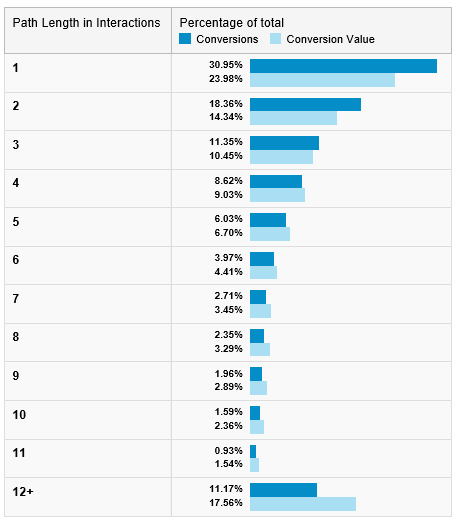
Fig. 1 – Number of sites visited before placing the order (source: enaA.com)
It is also interesting to see how much time passes from the moment someone visits an online store to them choosing an item and then completing the purchase by placing the item into the cart. A total of 43.06% of customers take the plunge on the same day, while 37.17% of customers make the final click after anywhere from 12 to 30 days. It seems that in this case too, the comparison of the share of purchases by value is inverted. The value of speedy purchases represents 36.2% of the total value of purchases, while the value of purchases made after 12 to 30 days accounts for 44.11% of the total value. It is safe to say that prior to purchasing a high-end product, we not only look at more websites but also allow ourselves more time to check out the offers at other online as well as brick and mortar stores. It is also true that it takes customers more than four days to place orders for above-average purchases (€160 at enaA.com).

Fig. 2 – Time between the first visit and placing the product into the shopping cart (source: enaA.com)
But prudency does not end here. After placing the item in the cart, 72.07% of customers make the purchase immediately or on the very same day. However, it should not be ignored that 7.42% of customers make the actual purchase after 28 day or more. This, of course, includes our record-breaker of 16 months.

Fig. 3 – Days between placing the product into the cart and placing the order (source: enaA.com)
If your goal is to sell items faster or, better yet, to sell them in general, I suggest providing the customer with a detailed product description. The description should include everything a customer might be interested in. This will reduce their need to seek out further information on the product elsewhere. By doing so, they will be less likely to purchase the product that you are offering somewhere else. There’s nothing easier than offering a customer who has almost made up their mind to make the purchase at your online store a discount in the form of a personal conversation.
Whatever you do though, never treat online customers hastily.
First steps in VR-commerce
Excellent experience with Trillenium at Asos in London. VR is next big step in the way we will use our computers, smartphones. Glad to be at least small part of it.

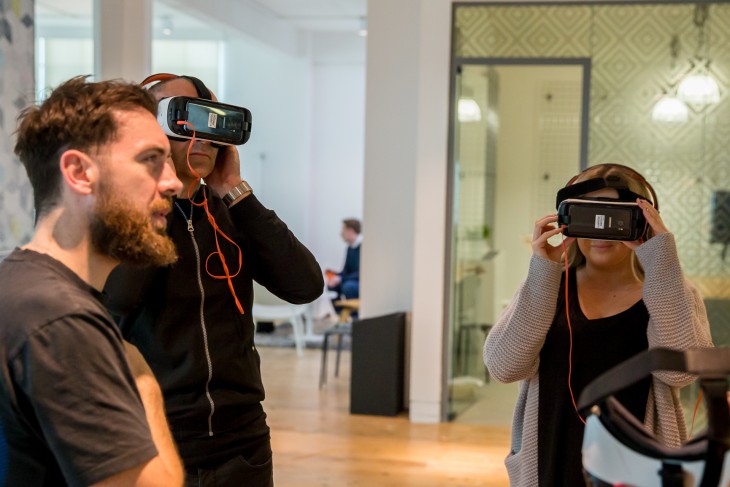
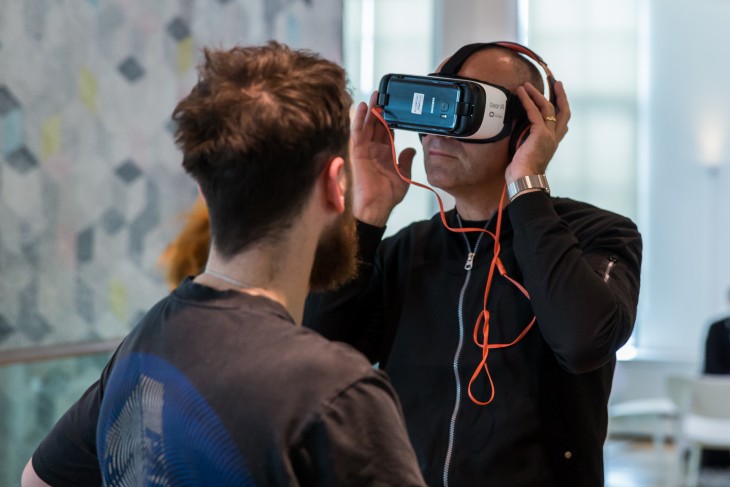


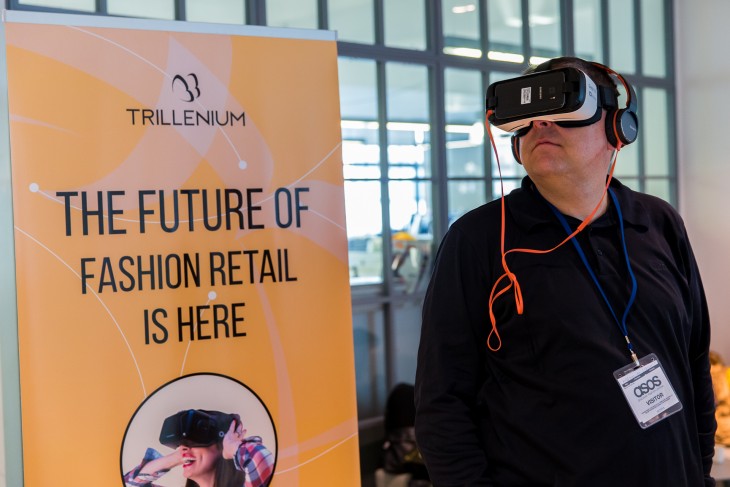
How to Successfully Sell Online after Google changed
If your sales figures mainly depend on Google, Facebook, and various advertising networks, you’ve hit a dead end. Even if an average 2% of clicks end up converted to sales (not a bad result), taking into account an average price of $ 0.15 per click (also not a bad price), the cost of advertising with Google amounts to $ 7.5 per purchase. If this was the price to pay just once for a regular customer, guaranteed to buy more, you’d still be able to stay in the black. However, you will have to pay $ 7,5 for each purchase coming from Google forever. Customers are creatures of habit. The next time the majority of customers will again start their sales journey on Google. If your ad is not there this time round.
After Google changed the positions of ads and is now more advertising panel than search engine. On mobile phones whole first screen is reserved for ads. On PC’s and laptops users now see four ads first and only two to three search engine results.
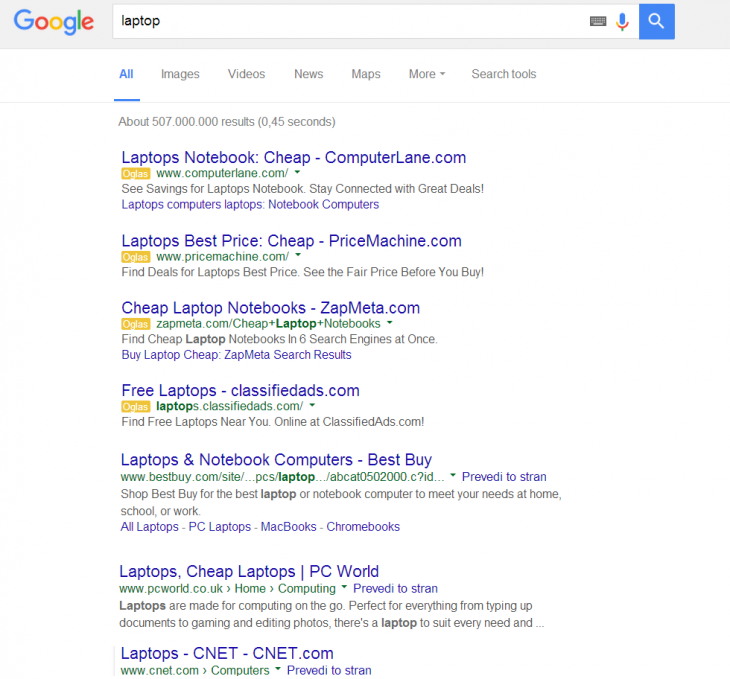
Ok. Thank’s Google. It is even more clear now how to actually successfully sell online. Just take next three steps forwards as soon as possible:
1. Calculate the actual success rate of your existing Google advertising campaigns, as well as other services where you might be paying for clicks or impressions (price comparison sites, for example are even less effective than Google), making sure the sales you generate with their help let benefits go to your pockets and not theirs. Think about whether it’s worth it in the long run!
2. Ensure your offer has the best possible content. This is a mantra repeated time and time again by all SEOs and inbound marketing experts. However, never put too much stock into how many times your keyword is written in the meta tag. What you need is a truly excellent description of your offer. It needs to be a real pleasure to read, telling buyers everything there is to know about your offer and convincing them to make a purchase. You should additionally ensure a short summary which is visible when a link to your page is published on Google, Facebook, etc. And that’s it. Believe me, if you don’t know the best description for your offer, no inbound or SEO expert can help you.
3. Instead of paying for clicks and impressions, start by only paying an adequate share of the realized sales to those who help you generate a larger number of purchases. Use performance marketing! You can find on affiliatewindow.com all top brands are using it.
Alternatively, you can post your offer in the largest online stores on the Internet:
a. Amazon.com
b. Alibaba.com
c. Ebay.com
d. enaA.com
Six Top Technology Trends in 2016
When picking out the most major potentially disruptive tech trends for the new year, I always look at the predictions from the past couple of years. Last year, I drew attention to the Internet of Things, 3D printing, cloud computing, big data, security, data privacy and IT consumerisation. The predictions have all come true; only 3D printing is gaining ground slower than I anticipated.
The jobs we’ve all grown accustomed to are disappearing. Our environment is seeing an influx of people with customs and culture unknown to us. Global stock exchanges are behaving not unlike the fastest and most terrifying roller-coaster ride in the world, the Formula Rossa ride in Abu Dhabi. The news reports about the latest wars have all but replaced bed-time cartoons. We’re getting older: Barbie is already 57, while Tom and Jerry celebrated their 76th birthday this year. All three still have a regular job, only here and there allowing young people to shine.
With all that’s going on, it’s all too easy to forget that there have never been as many people thinking about how to make the world a better and kinder place for more than 10 billion inhabitants, destined to walk the Earth in 2050. At the moment, it seems like nothing special is happening. But this in itself is the greatest of illusions. We are destined to wake up one day, only to find a new futuristic London airport at the mouth of the River Thames; Tokyo will show off its 1.7 kilometre skyscraper, there will be a motorway stretching from London to Beijing, a railway line from Beijing to New York, a motorway traversing what today are inconceivable bridges through Norwegian fjords, there will be a new two-hundred kilometre canal from the Atlantic to the Pacific going through Nicaragua, and Gaudí’s Sagrada Família in Barcelona, under construction since 1882, will have finally been completed. There is no doubt all of this will be possible thanks to new technologies, encompassing everything from new materials and robots to artificial intelligence, virtual reality, 3D printing and modern means of transport.
Some things never change
Once again, as has been the case throughout the years, I have to predict that we will continue to write in MS Word and use MS Excel spreadsheets with almost 100% certainty.
Virtual Reality
When I first met Hrvoje Prpić, I told him that Trillenium somewhat premature. Yeah, a week or two :). However, Trillenium is today the leading builder of VR adventures for retailers.
In March 2014, Mark Zuckerberg once again demonstrated his incomparable prescience, compared to his one hundred billion in their pocket competitors, when he paid two billion dollars for Oculus Rift, what was then an almost non-existent company. This summer, Oculus Rift will release its VR devices for the high retail value of 599 dollars; consumers are expected to spend more than 5 billion dollars this year on playing in virtual reality (the number last year was 660 million).
However, this is not only about video games, even though the gaming industry is planning to not only expand its offer of VR games, but also move it into the cloud. This in turn will also expand the number of cloud services and the need to increase data-transfer rates through the Web and mobile networks. We will be faced with a completely new user experience which will probably no longer include TV screens, monitors, keyboards and PCs. All we’ll need is a smart phone and a virtual reality interface.
Due to all of the changes associated with it and with the consent of the X, Y, Z and millennial generations, virtual reality is the chief trend which will undoubtedly be followed and supported by technological progress in other areas.
Artificial Intelligence
Do you know Amy Ingram? Amy is AI powered personal assistant for scheduling meetings. You interact with her as you would with other person. Here you can get Amy for free.
When five years ago, Apple started equipping its smartphones with Siri, most users never even considered it was a form of artificial intelligence. In 2016, Amy, Siri, Google Now, Alexa and Cortana will become completely run-of-the-mill.
Nowadays, we are already used to computers doing more administrative tasks than people; they are better at seeing, hearing, recognizing patterns, etc. It will take some getting used to the fact that they will also be making better conclusions. It is a fact that only the crunching power of computers can find better solutions in big data by using software with artificial intelligence characteristics. IBM’s Watson is proof of this concept, while Amy, Siri and Cortana will offer a friendly helping hand when dealing with artificial intelligence.
Smart Devices
The expression “smart devices” is used for everyday products which collect data through Wi-Fi or Bluetooth networks and are controlled via smartphone apps. This year, a growing number of chairs, lawnmowers, refrigerators, cups of coffee and door handles will be sending out data. Most of them only collect data on when they are being used, for how long and at what time of the day; others also measure air humidity and temperature.
However, smart devices are also smart houses and the Internet of Things. If we look at it with an even wider angle, these devices also include robots, drones and, at the end of the day, smart cars. Simply put, computers will be everywhere. Everything will be interconnected. Devices will send and use data from the cloud. It’s up to us to get ready and take advantage of it.
Mobile Payments
Banks are behind with the times. Banks are cumbersome. So say the start-up companies looking to bring a breath of fresh air to how we pay for things. It’s a fact that banks are losing the payment transaction business. Goldman Sachs reports that financial start-ups will take over banking services worth at least 4.7 trillion dollars per year.
Investors had already detected this trend in 2014 and invested 12 billion dollars into new companies. Europe thus already has three unicorns – companies whose valuation has quickly exceeded a billion dollars: Adyen, Powa, and Skrill. On the global market, they will be forced to compete with Stripe, WePay, and Betterment.
This is not all down to the rigidity of traditional banks. The rapid growth of companies, such as Airbnb and Uber, is bringing new requirements to the financial services market. Such needs can only be met by new innovative companies. As a cherry on top, new entrants to the market are starting to use web-based and mobile services to offer better student loans and customer support for users without bank accounts. At the moment, this represents a pool of 2.5 billion people.
Media
An increasing number of users access media through Facebook, Twitter and other social networks; this means less and less people are accessing content through the media outlets’ home pages. According to Pew Research, this habit has been taken up by almost two-thirds of U.S.-based users. The phenomenon is only expected to grow. As is often the case, the rest of the world is certain to follow this trend in 2016. It’s interesting to note that analysts didn’t find any deviations among demographic groups. The trend exists with all generations, regardless of gender or social status.
The habits of television viewers have also been changing; they increasingly prefer to stream films and series via the Internet. This allows them to watch whatever they want, whenever they want it. In 2016, the obvious shift of attention to content-oriented users will represent a challenge for the mainstream media. They will need to figure out how to improve their offer, while retaining their popularity, visibility, and subscribers.

